After he noticed gambling odds fluctuate wildly at the end of a football game, Todd Schneider realized a correlation between betting odds and game excitement. The Gambletron 2000 is a fun look into the proxy.
It occurred to me then that variance in gambling market odds is a good way to quantify how exciting a game is. Modern betting exchanges allow gamblers to bet throughout the course of a game. The odds, which can also be expressed as win probabilities, continually readjust as the game progresses. My claim is that the more the odds fluctuate during a game, the more exciting that game is.
Games and odds update automatically up to the minute, with a highlight on the “hotness” of games, or the amount of variation over time. A blowout game shows a line that heads towards 100 percent probability that a team will win, whereas a comeback game shows a dip towards 100 percent for one team and then a trend back towards 100 percent for the opposition.
I had the odds for the Golden State-Portland game open for part of the time tonight, and it was kind of a fun accompaniment.
Mobile alert app for sports, anyone? Current offerings are abysmal.

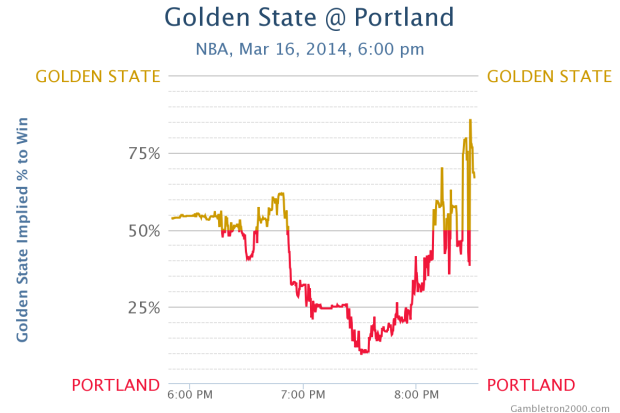
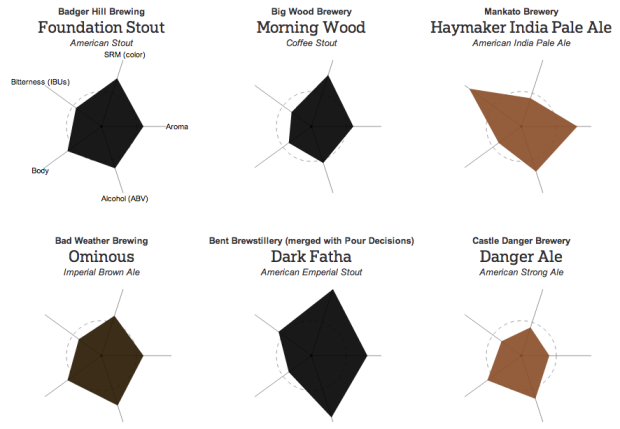



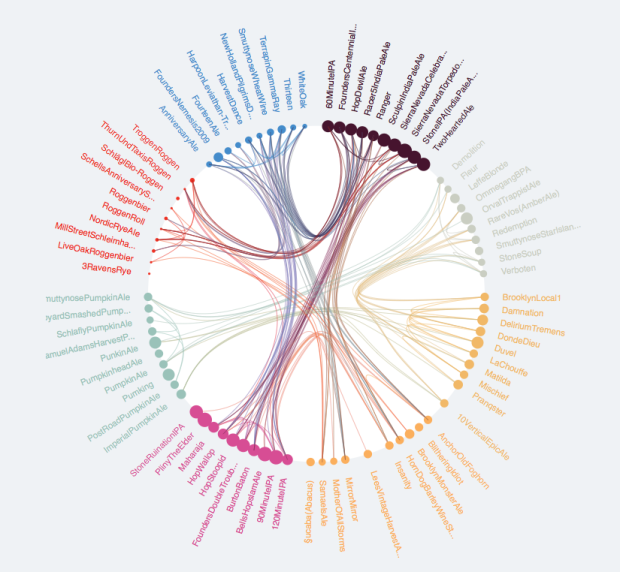
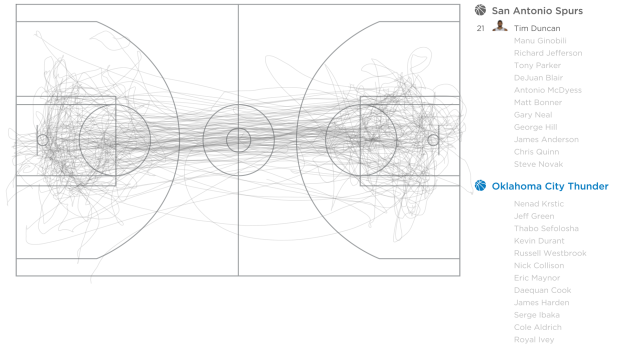
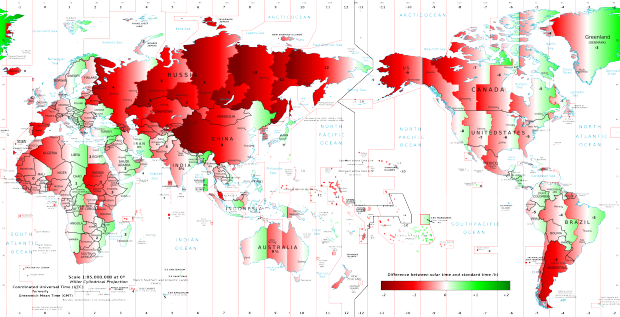
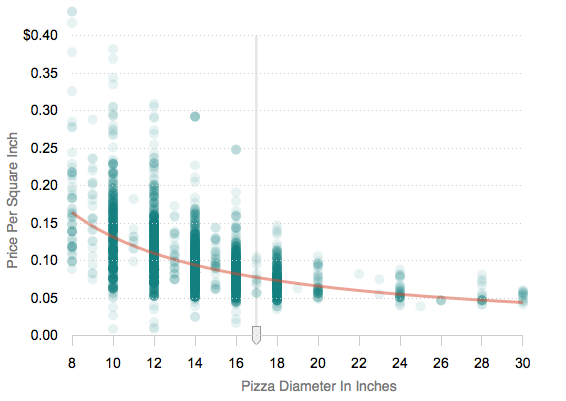
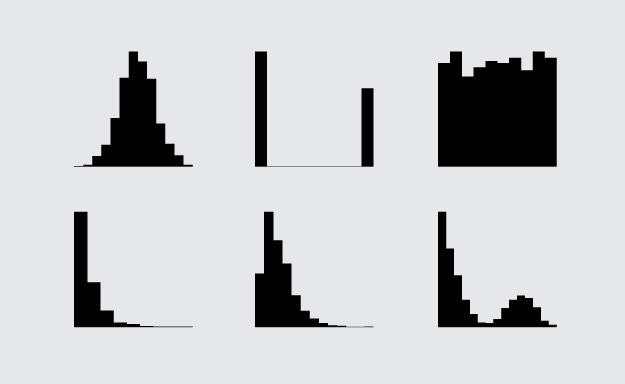
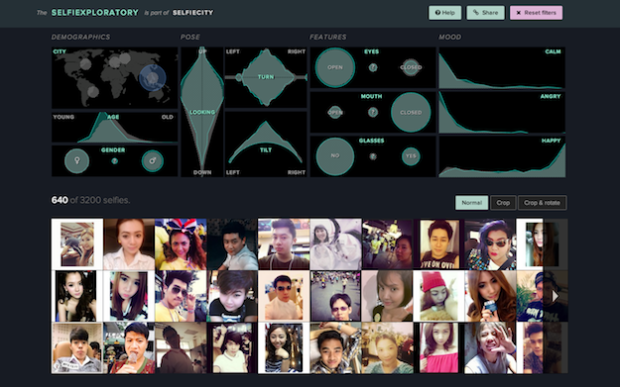
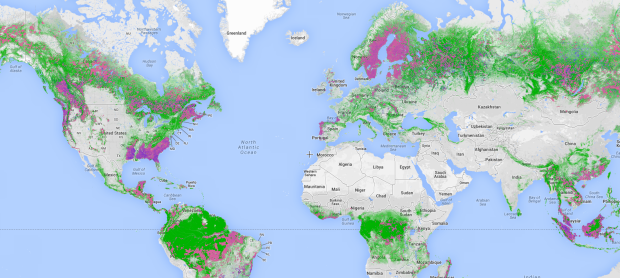
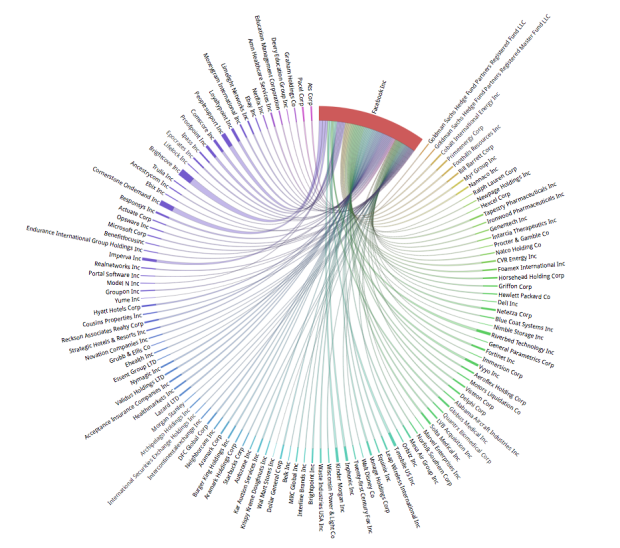
 Visualize This: The FlowingData Guide to Design, Visualization, and Statistics (2nd Edition)
Visualize This: The FlowingData Guide to Design, Visualization, and Statistics (2nd Edition)










